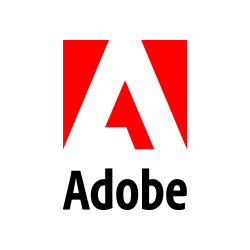Schedule
Below you'll find the schedule for SmashingConf San Francisco 2016. We’ll keep this page regularly updated with all new speakers and sessions, so be sure to keep checking in! Stay updated.
Tuesday, 5th | Wednesday, 6th
| 08:00 | Doors Open |
|---|---|
| 9:00 | Welcome and Intro |
| 9:20 |
Proper Etiquette for the Advancement of DesignDesigning at your desk with Photoshop or HTML and CSS is easy, but getting your bosses and clients to give your work their stamp of approval is often quite a feat. In this presentation, Dan will share some stories of tools, methodologies, and non-traditional deliverables that can help you get the buy-in you need. Follow along to learn how to make everyone you work with say "please" and "thank you!" |
| 10:10 |
Atoms, Modules and Other Fancy Particles: Building a Pattern Language For The WebAs many of us move away from designing pages toward designing systems, one concept keeps coming up: modularity. Modular systems promise to be scalable, maintainable, and easier to work with – but what if the “system” we end up with doesn’t perform as well as we expect? What if the result is disappointing – an overly simplistic “patched together” design, that’s not nearly as scalable and adaptable as we’d hoped? In this talk we’ll look at what it actually means to have a resistant design system and a shared pattern language in your team. We’ll talk through the steps to get there, as well as mistakes, stumbling blocks, and lessons learnt. |
| 11:00 | Morning Break |
| 11:30 |
CSS for Software Engineers for CSS DevelopersDepending on where you draw your measurements from, the first programming languages for use on ‘modern’ electric computers were designed in the ’40s and ’50s. CSS, on the other hand, is a mere adolescent—born in 1996, it’s just 18 years old. This means that software engineers have had over four decades’ head start on us: we should be listening to a lot more of what they have to say. In this talk, we’ll take a look at some very traditional computer science and software engineering paradigms and how we can steal, bend, borrow, and reimplement them when writing our CSS. Writing CSS like software engineers so that we can become better CSS developers. |
| 12:20 |
Beyond the browserHTML is arguably the most common language in the world. The magic of the browser delivers it to us on our phones, on our wrists, in our cars and even on our refrigerators. But HTML is starting to seep beyond the browser and many companies – from startups to major enterprises – are using the open web platform to build full-blown desktop applications. The benefits are diverse and the caveats are dwindling. In this talk, we’ll explore what going hybrid entails and how to utilize the skills you already have to start building killer, HTML-based desktop apps. It’s time to think beyond the browser. |
| 1:10 | Lunch Break |
| 2:30 |
Photoshop is Dead!: Editing Images in CSSUna’s talk, Photoshop is Dead: Editing Images in CSS, will demonstrate how we can use CSS blend modes, filters, and gradients to implement custom photo effects right in the browser. The talk will help us understand how blend modes work and will show us how to implement dynamic and accessible graphics within our own web projects. |
| 3:20 |
Yesterday's perf best-practices are today's HTTP/2 anti-patternsThe limitations of HTTP/1.X forced us to develop various application workarounds (sharding, concatenation, spriting, inlining, etc.) to optimize performance. However, in the process we’ve also introduced numerous regressions: poor caching, unnecessary downloads, delayed execution, and more. HTTP/2 eliminates the need for these hacks and allows us to both simplify our applications and deliver improved performance – a rare combination! In this session we’ll take a critical look at how the current best practices came to be; the new features of HTTP/2 that make them obsolete; and what you need to do to deliver the optimal HTTP/2 experience:
… plus other hands-on tips for getting the most out of HTTP/2 both on the server and the client. |
| 4:10 | Afternoon Break |
| 4:40 |
Vision, Hearing, & The Brain: The Top 10 Things You Need to Know about PerceptionWhen you design a website, an app, software, or a product, you expect a human to interact with your design with their perceptual/sensory systems. If you want to design a product that is easy to use, engaging, and that meets your goals and objectives for user experience, then you need to know about the psychology of perception. Susan will share her top ten most important research studies on perception – concentrating on vision and hearing, including: the role of peripheral vision vs. central vision, the emotional influence of shapes, why seeing and paying attention are not the same thing, and the power of auditory cues. |
| 5:30 |
Addicted to CommunityBased on my experience at Stack Overflow and Discourse, a guide on building a habit forming community based on fun, tangible progress, and respect. Here's how to gently guide your community members down the path toward mutual cooperation. Three key takeaways: 1. How Q&A and Discussion are different, and how they can learn from each other 2. Building habits that lead to positive community behaviors 3. Communities as interactive, multiplayer text adventures |
| 6:20 | Closing Remarks |
| 8:00 | Party Time! |















